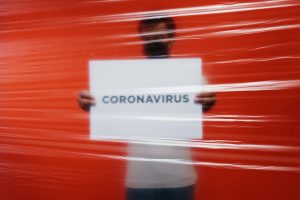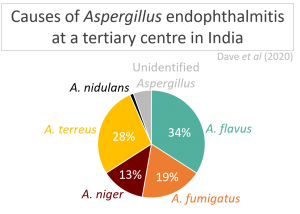Submitted by Aspergillus Administrator on 25 January 2010
 Some insects are a health hazard to humans or are a threat to human food supplies. Controlling the numbers of insects is a high priority and the possibility of using fungi is being investigated.
Some insects are a health hazard to humans or are a threat to human food supplies. Controlling the numbers of insects is a high priority and the possibility of using fungi is being investigated.
Aspergillus is a known pathogen of some of these important insects e.g. mosquito, cockroach and locust so it is feasible that judicious use of Aspergillus could be developed into an important weapon against our tiny enemies.
One of the problems to be overcome before Aspergillus could be used in this way is how to safely infect large numbers of insects or their larvae (which live in water). Given that some species of Aspergillus are themselves pathogenic and/or poisonous to humans it wouldn’t be a good idea to simply adopt a widespread air dispersal, so alternative options are being considered.
This paper investigates several factors that influence the mortality of insect larvae after treatment with fungal spores and found that the number of larvae killed were dependant of several factors (species of fungus, larval stage of the insect, density of larvae and nutrient availability) but not dependant on concentration of fungal spores applied (due to clumping together of the spores on the surface of the water) or the time of exposure of the insects to the spores. Better methods for ensuring an even spread of spores across the surface of the water the larvae were growing in was called for.
This study on fully grown mosquitoes addresses the need to avoid spraying fungal spores into the air, and instead tries to make progress on how to infect flying insects when they come to rest by coating the surface they land on with spores. Methods that used a particular solvent (Evaporative Shellsol T solvent) and a ‘K-bar’ stainless steel coating bar was found to be optimal for the purpose of coating paper in such a way that insects landing on the paper were given an effective dose of spores.
The coated paper achieved a consistent result and thus provides a tool that can be used to achieve comparable results between different labs throughout the world.
News archives
-
Title
Date


